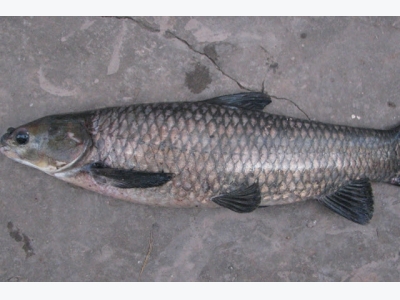Fight fish disease with fish

Scientists are checking the possibility of limiting the spread of the dangerous fish disease FZT with the help of a very special fish
We all know that fish is good for us. But a healthy and tasty fish dish may also give rise to infectious diseases caused by Fish-borne Zoonotic Trematodes, also known as FZT.
Here, parasitic worms – trematodes – infect fish-eating hosts such as birds and mammals. Humans can also be infected with this dangerous disease.
A new thesis now indicates that FZT can be fought using a special kind of fish, which can help eradicate the snails in which the parasitic eggs mature.
“We have good reason to look for solutions to reducing the FZT risk, as the disease can cause diseases such as liver cancer with severe and chronic infections of small liver trematodes in humans,” says senior researcher Henry Madsen, of the Department of Veterinary Disease Biology, Parasitology and Aquatic Diseases at the University of Copenhagen.
FZT – a widespread public health problem in Southeast Asia
FZT represents a significant public health risk in many parts of the world, including Southeast Asia, Eastern Europe and China. Locals and tourists can be infected with FZT by consuming raw or inadequately prepared fish containing live trematodes.
But how, you might ask, can a fish help fight a fish-borne disease?
The fish that has been picked out to guard against the disease is the black carp (Mylopharyngodon piceus), also known as the black Chinese roach.
The role of the black carp in the biological control of FZT consists of eating freshwater snails in nursery ponds stocked with 1-week-old fry (10–12 mm in length) of Indian carp, Labeo rohita.
Here, as in most other freshwater habitats, streams, canals and rice fields in the area, these snails function as the first intermediate host for the trematodes.
The snails assume this role as intermediate hosts by eating parasite eggs. After a while, a new larval form, known as cercariae, is released from the snail. After being released, these cercariae need to find a fish as a host. Some attach themselves to the skin of the fish, while others penetrate its flesh, where they can remain until the fish is eaten by e.g a human.
The black carp cannot do it all on its own
The researchers conclude that the black carp is an effective predator of freshwater snails and thus an effective weapon against FZT in the Vietnamese nursery ponds.
However, due to the complexity and the intensity of FZT infection, the black carp cannot take on the fight against the spread of the disease on its own. If there are too many snails in the pond, the carps will not manage to eat them all.
So in addition to adding black carps to the ponds, it may be useful to dry out the ponds and remove the mud where the snails live from the bottom and the sides of the pond. This method can, by itself, remove up to 90 percent of the snails, reckons Madsen.
”Further studies are needed to ascertain what intrinsic effect the black carp has on the reduction of the FZT risk.”
Có thể bạn quan tâm
Phần mềm

Phối trộn thức ăn chăn nuôi

Pha dung dịch thủy canh

Định mức cho tôm ăn

Phối trộn phân bón NPK

Xác định tỷ lệ tôm sống

Chuyển đổi đơn vị phân bón

Xác định công suất sục khí

Chuyển đổi đơn vị tôm

Tính diện tích nhà kính

Tính thể tích ao hồ



 Farmed salmon are as fertile as wild salmon
Farmed salmon are as fertile as wild salmon  How healthy is farmed salmon?
How healthy is farmed salmon?